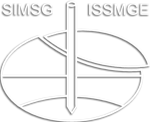A multi-objective optimization approach for identifying the key influencing factors in hydrate gas production
A multi-objective optimization approach for identifying the key influencing factors in hydrate gas production
Production trials have shown that gas production from oceanic hydrates is not satisfactory due to problems such as low efficiency and sand production. Moreover, hydrate exploitation could pose a risk to the marine environment by causing catastrophic seafloor instability. Thus, it is of utmost importance to choose an optimal site that enables economic and safe production. This paper aims at a multi-objective optimization approach to evaluate the producibility of hydrate reservoirs and identify the key influencing factors. The multi-phase coupling module Tough + Hydrate code and limit equilibrium method were adopted to populate a set of hypothetical scenarios of gas production from hydrate reservoirs by varying geological conditions and production parameters. The numerical scenarios were used to formulate indicators that characterize the producibility of a reservoir with two evaluation indexes, namely high production and low environmental impact. Sensitivity and correlation analysis within the numerical scenarios were conducted to identify the significant parameters that control the producibility indicators. The results show that there is a difference in the importance ranking of the influencing factors for the reservoir producibility. In certain combinations of production scenario parameters, the economic and safety indexes do not perturb each other. That is, single-objective optimization can be performed under these geological conditions. For perturbed combinations, the multi-objective optimization will select different preferred geological or production conditions due to the different bias of dominant objectives. The proposed approach is potentially useful for fast screening of optimal sites for extracting gas from oceanic hydrate reservoirs.
X. Feng; M. Zhou; L. Tan; F. Liu
9th International Congress on Environmental Geotechnics (ICEG2023)
Advances in Numerical Modeling
https://doi.org/10.53243/ICEG2023-138
